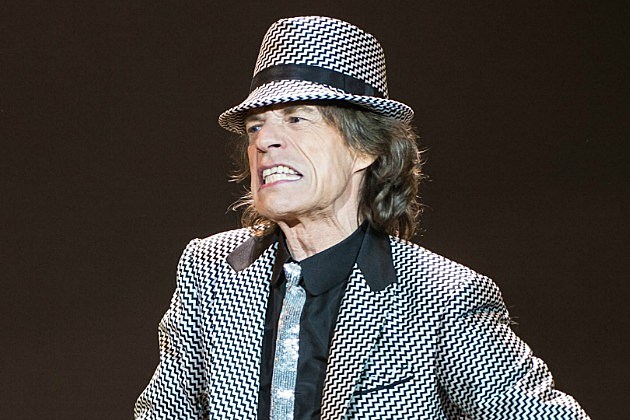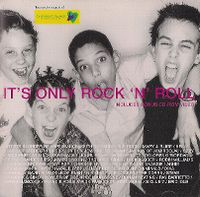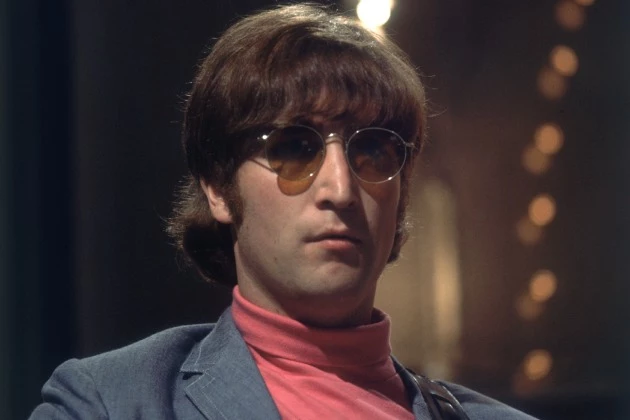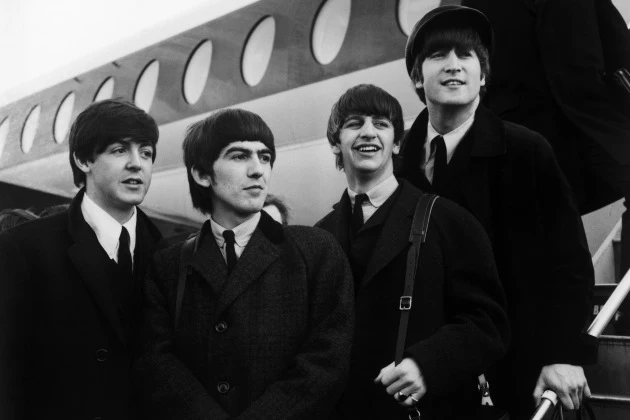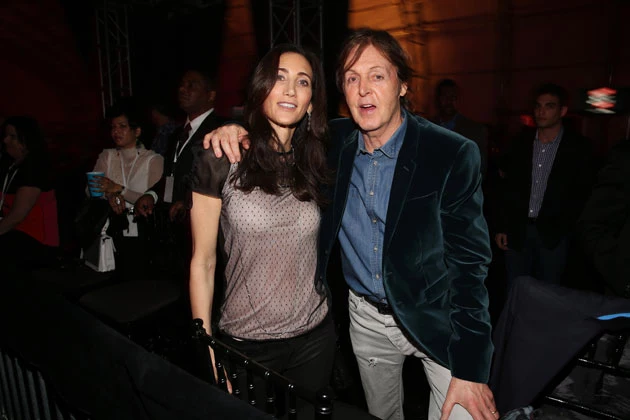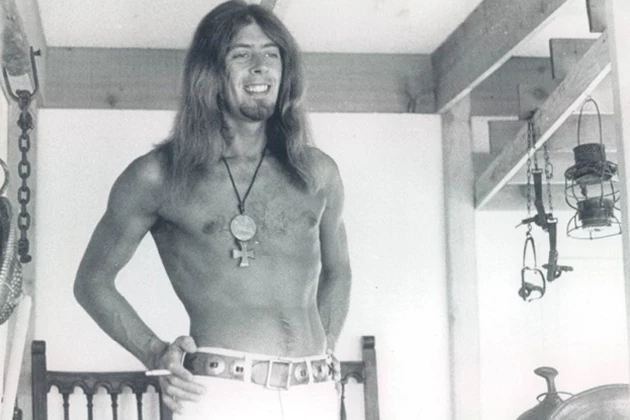jueves, 21 de febrero de 2013
Cover of the Week
A Great Cover!
The Strokes Rules!
Arctic Monkeys Rules!
Arctic Monkeys - Take It or Leave It [The Strokes Cover]
Neal Schon and Carlos Santana Discussing New Collaborative Project
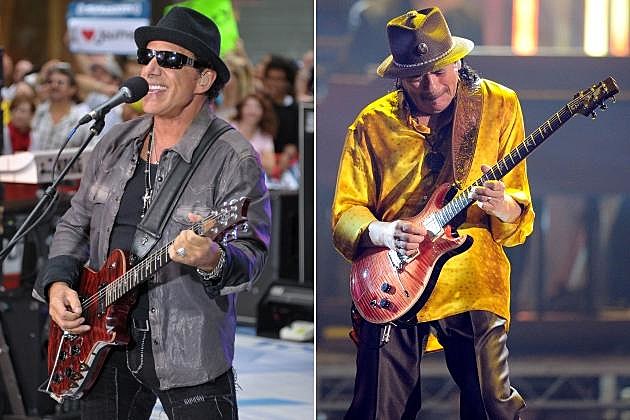
Neal Schon of Journey is in talks to work once again with Santana.
In an interview with Noise11.com, Neal said, “I’ve reconnected with Carlos Santana now and we have been talking about doing something together again. We’ve talked a lot on the telephone and I hooked up with him before Christmas. You never know what’s going to happen. Life is full of surprises. It’s very exciting.”
Neal was with Santana for the albums Santana III (1971) and Caravanserai (1972). “Yeah, just two records. I joined the band in 1970 through ’72,” he said.
Neal Schon was a 15-year old kid when he joined Santana and he had the choice of playing in Santana with Carlos Santana or in Derek and the Dominoes with Eric Clapton. “I played with Derek and the Dominoes on stage in Berkeley in San Francisco. Eric came in the studio, Santana was in the studio, we were jamming,” he said. “I got to jam with Clapton that night. I was astounded he was in the room. He was one of my biggest idols. I was very young. I was 15. It was cool”.
“The next day I came back to the studio to jam with the Santana band and Eric left a message for me and asked me to come over to Berkeley Community Theater. I didn’t have a licence. I didn’t have a car. I talked somebody into driving me over there at the last minute. They got me there 10 minutes before he was to go on. I walked in backstage. I had my guitar and he told me that we’d play seven songs. He would then introduce me and I would stay on stage and keep playing”.
“Afterwards, he asked me back to the hotel. He asked me who I listened to and I told him mainly him. I learned to play by listening to Wheels of Fire and he didn’t believe me. He had a guitar there and I played note for note Crossroads. I knew every note. He asked me if I would move to London but it was crazy. I was so young and still living at home with my folks”.
Although the Derek and the Dominoes job didn’t happen, Santana did. “I had been hanging out with Greg Rolie and Carlos Santana for a good three and a half months,” he said. “I felt in my gut they were going to ask me to join and the next day Eric asked me to join and they asked me to join so I chose to go with the Santana band”.
The Strokes Announce New Album: 'Comedown Machine'

The New York City rock band, which shot to fame with its garage-revival debut Is This It? in 2001, will release its fifth studio album March 26. The record, which follow's 2011's Angles, will be preceded by the lead single "All the Time."
Of course, last week, the band released the track "One Way Trigger," which makes it a sort of prequel -- The Hobbit to the new song's Lord of the Rings.
With a less than two-year gap between albums, the band has proved it is once again capable of speedy productivity. It took five years for The Strokes to release Angles after their previous album, First Impressions of Earth.
A decade after kicking off the revival of early '70s garage rock, The Strokes are plunging further into the world of synthesizers that began in the '80s.
The band -- who is working on their fifth studio album -- has dropped a new single, "One Way Trigger," which marries crunching guitars, looping rhythms and singer Julian Casablancas' trademark voice with a whole lot of MIDI.
The middle of the past decade saw synth rock brought back by bands such as The Killers (and the return of original purveyors such as New Order), though it has somewhat fallen by the wayside in recent years. The Strokes played with it a bit on 2011's Angles, and now they've jumped full-tilt into the electronic abyss.
I leave two advance tracks
miércoles, 20 de febrero de 2013
New Jimi Hendrix Track, ‘Earth Blues,’ Streaming Online
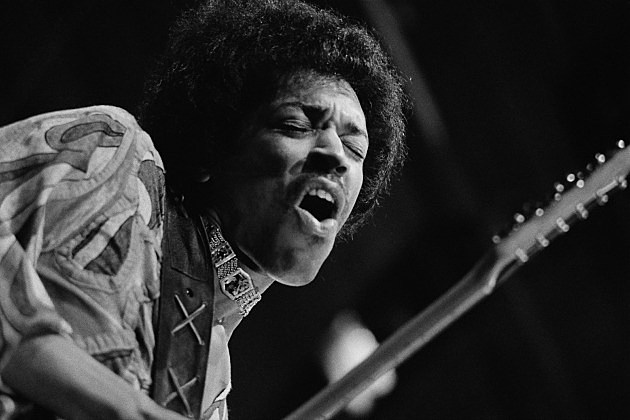
The complete album won’t be out until March 5, but if you’re interested in getting a sneak preview at a cut from the new Jimi Hendrix compilation ‘People, Hell & Angels,’ you’re in luck.
NME has debuted a stream of the album cut ‘Earth Blues,’ which (as we reported previously) has surfaced in different incarnations on a pair of previous posthumous Hendrix releases: 1971′s ‘Rainbow Bridge’ and 1997′s ‘First Rays of the New Rising Sun.’ As co-producer John McDermott discussed in a recent interview, ‘Blues’ dates from a May 1969 session when it “was one of the songs that Jimi showcased to [drummer] Buddy [Miles] and [bassist] Billy [Cox]. While they didn’t get it then, they certainly had an interesting handle on it.”
‘Earth Blues’ arrives roughly a month after the ‘People, Hell & Angels’ track ‘Somewhere,’ which — like the other songs on the album — stretches the definition of “previously unreleased” by offering a sonically rejiggered take on archival material that’s already familiar to diehard Hendrix fans. But even if this stuff isn’t exactly brand new, it should provide some measure of satisfaction to longtime listeners who’ve been displeased with the occasionally cavalier approach taken to the legendary guitarist’s catalog. In McDermott’s words, “To us, this is the version that has all the right pieces. It’s got the original instrumentation and none of the posthumous overdubbing.”
JIMI HENDRIX "EARTH BLUES"
SUN SEEKING ANDY & MR Q play MONA LISA BLUES
Metallica Says They Did Not Ask the Military to Stop Using Their Music

As it turns out, Metallica had not asked the U.S. Navy to not use their music on detainees in preparation for what some called “torture” and others called “enhanced interrogation techniques.” The band categorically denied that they had any contact with the military on such matters.
In a post called ‘Clearing the Air’ that appeared on the group’s website yesterday (Feb. 18), Metallica wrote, “There has been a lot of talk recently about us asking the military not to use our music to ‘soften people up before interrogation.’ We NEVER commented to the military either way on this matter. Any statements that have been made otherwise are not correct.”
Last week the anonymous Navy SEAL who reportedly killed Osama bin Laden said – using the name the Shooter – that when Metallica heard their music was used in that capacity, they asked the military to stop, out of an unwillingness to promote violence. When asked in 2008, James Hetfield noted that he was conflicted by its use, but that was out of a desire to have his band remain apolitical.
“Part of me is proud because they chose Metallica,” he said. “And then part of me is kind of bummed about it that people worry about us being attached to some political statement because of that. We’ve got nothing to do with this and we’re trying to be as apolitical as possible, ’cause I think politics and music, at least for us, don’t mix.”
domingo, 17 de febrero de 2013
Cover of the week
Peter Paul & Mary - Blowin in the wind
"Blowin' in the Wind" is a song written by Bob Dylan in 1962 and released on his album The Freewheelin' Bob Dylan in 1963. Although it has been described as a protest song, it poses a series of rhetorical questions about peace, war and freedom. The refrain "The answer, my friend, is blowin' in the wind" has been described[by whom?] as "impenetrably ambiguous: either the answer is so obvious it is right in your face, or the answer is as intangible as the wind".
In 1999, the song was inducted into the Grammy Hall of Fame. In 2004, it was ranked #14 on Rolling Stone magazine's list of the "500 Greatest Songs of All Time".
-----------------------------------
Peter, Paul and Mary:
Peter, Paul and Mary were an American folk-singing trio whose nearly 50-year career began with their rise to become a paradigm for 1960s folk music. The trio was composed of Peter Yarrow, Paul Stookey and Mary Travers. After the death of Mary Travers in 2009, Yarrow and Stookey continued to perform as a duo under their individual names.
Mary Travers has said she was influenced by Woody Guthrie, Pete Seeger, and the Weavers. In the documentary Peter, Paul & Mary: Carry It On — A Musical Legacy members of the Weavers discuss how Peter, Paul and Mary took over the torch of the social commentary of folk music in the 1960s.
Billy J. Kramer on the Beatles, His New Album and Why Brian Epstein Should be in the Hall of Fame

Billy J. Kramer is a Liverpool musical legend. A friend of the Beatles, he was signed to Parlophone in the wake of their initial success. With the backing of Manchester’s the Dakotas, he placed a number of compositions by John Lennon and Paul McCartney in the upper range of the charts between 1963 and 1965, including ‘Do You Want to Know a Secret?,’ ‘I’ll Keep You Satisfied’ and ‘I’ll Be on My Way.’
Kramer was managed by Beatles manager Brian Epstein, whom he believes is on the verge of being forgotten for his role in the Beatles story. He has launched a campaign to try to get Epstein, who died in 1967, inducted into the Rock and Roll Hall of Fame so that Epstein’s legacy will be preserved. Although the Hall has a category for non-performers, to date no manager has been given such an honor.
Despite trying to fight off a case of bronchitis, Kramer, who now lives in New York, is finishing up a new album, ‘I Won the Fight,’ and the first single, ‘To Liverpool with Love,’ is available on iTunes. He spoke with us about his hopes for Epstein’s induction and his upcoming work.
Let’s begin with this campaign that you’ve started. Why does Brian Epstein belong in the Rock and Roll Hall of Fame?
Because Brian Epstein brought the biggest band to the world. They’re the biggest band that’s ever been and ever will be.
He’s one of the few managers in rock history who’s almost as famous as the group that they managed, so what was it specifically that he did for the Beatles?
How much more special than to discover the biggest band ever and bring them to the world? They brought so much great music — so much enjoyment — and he was the one that did it. He was the man that pounded the pavements in London when nobody wanted to know about the Beatles, and he was responsible for making them what they were. I think only for Brian they could have well been overlooked. They could have stayed in Liverpool forever.
Why do you think he’s been ignored for all these years?
You know, that is the thing that baffles me. It’s something that I can’t explain. I just think it’s sad that he’s become this kind of forgotten man, and he shouldn’t be.
There’s a perception that the voters are this “old-boys network” of cronies, with all the politics that comes with that. So what can we, as Beatles fans, do to alert them to this oversight?
I think that they should write and complain, and stand outside the Rock and Roll Hall of Fame. Maybe I’ll have to do that myself!
How did you meet Brian Epstein?
I met Brian through appearing on the same circuit as the Beatles. After work in the evenings I was doing a lot of shows with the Beatles. I came third in a popularity poll in a paper called Mersey Beat, and I think that brought his attention to me, because I was not professional.
I’ve always thought it was strange with Brian that he became involved in rock n’ roll because his upbringing was so far removed from that world. We know the story of how he discovered the Beatles at the Cavern, but what was it about them that led him into this path, and later towards you, Gerry & the Pacemakers and Cilla Black to become this kind of Liverpool rock n’ roll impresario?
You know, I obviously think he was interested in pop music, and everybody doesn’t find out their role in life immediately, you know? I mean, I never set out to be a pop singer. It just happened. It was a series of events and the next thing I knew…I think Brian had always been interested in the arts, and he wanted to be a designer, actually. He saw the Beatles and saw potential and he went for it. And I think he was a great representative, because coming from Liverpool at the time — it wasn’t the greatest place on Earth. I think it was a disadvantage.
Right, being so far removed from London.
We were just the Northern lads!
I went to Liverpool a while back and I thought it was interesting how everything in England radiates from London outward. But Liverpool was very much about trying to shield itself from that and have its own identity where so many other cities were willing to take whatever London gave them.
I think that in Liverpool, the people are different. London is a mixture of people from all over the place, like New York. Liverpool is mostly people from Liverpool, and I think they’re more friendly and outgoing.
The Dakotas were a separate band, right? It wasn’t like you were a regular band and your name wound up in front. Am I correct with that?
No, they were a separate band from Manchester. What happened was that I had a band that was just my local friends and they other careers and didn’t want to turn professional. I was at a crossroads where I was either leave Liverpool for a while because of my engineering job or turn professional, and then Brian came along.
You recorded a handful of Lennon-McCartney songs. What did it mean to you to have this incredible source of material to draw from?
The funny thing is that I recorded ‘Do You Want to Know a Secret?’ before the Beatles. A lot of people don’t know that, and it was a No.1 hit for me in the U.K. To have people like John Lennon sit down and play me a song like ‘Bad to Me’ was a great point in my life.
You’ve always been very willing to talk about your history with the Beatles. The first I ever heard of you was when I saw ‘The Compleat Beatles’ documentary in the mid-’80s, and you’ve been a fixture at the Fest for Beatles Fans and are doing their cruise this year. Have you ever thought about writing a memoir about them?
To tell the truth, I’ve got a CD that’s coming out at the end of March that I’ve been working on for the past eight months. And when I get that out of the way I want to go out and perform the songs. I’ve got a lot of that already down. I’ve written a lot of notes. It’s just a case of getting focused and doing it.
I’m sure you probably have some stories about them that you’ve been keeping secret for a while out of discretion.
I think there are people who know more about me than I know about myself. It’s a funny thing.
So about this new album. It’s been a while since you’ve recorded anything, hasn’t it?
It’s been a while. People say to me, “It’s the first album in x amount of years,” but I consider this my first album, believe it or not. My other albums were just the hits and some filler. I used to go into the studio and sing songs off the music and I never, ever sang them again. There was no creativity in the albums, whereas for this one I’ve written some of the tunes and picked out what I think are good songs, as well. There’s been a lot of thought put into the songs. There’s a big difference in making an album in 13 hours and taking six or seven months to do it.
I saw that the first single is out. It’s kind of a love letter to Liverpool, isn’t it?
Yes, it is. I wanted to write a song about Liverpool and that’s why I came up with it. Plus, there was a message about Brian in it.
I saw you’ve got Liberty DeVitto playing drums. I grew up on Long Island during Billy Joel’s heyday, so it’s always great to hear him. He’s a very underrated drummer. What’s it like working with him?
It is great. You say he’s underrated, but I don’t think he’s underrated. I think he’s one of the best rock drummers ever. He’s wonderful to work with, and he’s become a real dear friend of mine. He’s been very supportive; he’s really been behind this project. He’s been very inspirational, and when I get on stage, he rocks me. He’s something else.
I have to ask this of every Liverpudlian I meet. Are you red or blue (referring to Liverpool’s two soccer clubs – Liverpool (red) or Everton (blue))?
You know something, that’s a question I don’t like to answer, but I will. When I was a kid, I used to go see Liverpool one week and Everton the next. But I was more red than blue. The [iconic Liverpool manager Bill] Shankly Era [1959-74] was absolutely magic.
Billy, thanks for taking the time to speak with us, and good luck with the new record.
Thank you. It’s been a pleasure taking to you. I can tell you, the work I did with the Beatles was magical. I could sit here and tell you stories. It was a fantastic part of my life.
miércoles, 13 de febrero de 2013
Curiosities about The Rolling Stones
A teenager named Mick Jagger made his way through a rail
station in Dartford, England, with a few blues albums tucked under his
arm, and met Keith Richards, with whom he would quickly
rekindle a friendship.
For a time, they played in a band called Little Boy Blue and the
Blue Boys.
Later, at an Alexis Korner Blues Incorporated show, they met
Brian Jones, a talented blond blues guitarist.
By 1962 the band was begging for gigs around London whilst
practicing covers of the songs of their blues heroes
Because of their mutual love of American blues, Jagger, Richards,
and Jones decided to form their own group, and they invited Dick
Taylor, drummer Tony Chapman, and Ian Stewart and called
themselves the Rolling Stones.
Charlie Watts and Taylor soon replaced Chapman, not long after,
by bassist Bill Wyman.
On 14th January 1963 the Rolling Stones first played together as
a group at the Flamingo Club.
In June of 1963 they released their first album.
By 1993, Wyman announced he wanted out.
By the summer of 1994, the Stones had another album and world
tour ready to roll, being the Voodoo Lounge a huge success.
In the last few years, the Stones have kept a low profile. Jagger
continues to pursue a film career, now as a producer; Richards is
working on another solo album; Charlie Watts, who is the one that has aged the most gracefully of all the Stones, released an album with his jazz quintet.
martes, 12 de febrero de 2013
The Roots Of... The Strokes
No great band is born without a struggle and no great records are born in a vacuum. For every artist whose ideas make your wig spin there are a huge pile of influences - from specks of colour to swathes of sound - that delivered them to that point. And this is where The Roots Of... comes in. Each week we'll take a band, pull apart the threads that make them who they are and build a Spotify playlist from those influences...
This week, The Strokes.
How can you not love a band that picked up the final piece of their jigsaw at an exclusive Swiss boarding school? As far as fairy-tale beginnings go, that's up there with the very best of them. Julian Casablancas already knew Nikolai Fraiture, Nick Valensi and Fabrizio Moretti from school in New York, in fact they'd even played together a little, but it was Dirty Harry fan Albert Hammond Jr. who completed the picture. "My intention was always to take undergroundish, cool music and make it mainstream," Julian said in 2009. "We haven’t achieved that", but there's so much they have achieved. Once described as having, "an indefinable quality of togetherness”, The Strokes redefined the idea of the gang, that indivisible unit with a look and a creative aesthetic so well honed it would shame AC/DC. It was Albert who said, "our music is beautiful anger", and that's as good a description of their needle-sharp looseness that you're ever likely to hear. But what got them there in the first place?
First Loves
As teenagers Julian and Nikolai were huge fans of LA scuzz-rockers Jane's Addiction – legend has it there's a live video of the band from 1997 that both are visible in. Julian was a huge fan of Pearl Jam and Nirvana while away at school, while he would later say the gift of a Doors tape from his step-dad would, "change his life. I had a sense I could do something like that." Among Fabrizio's first loves was Michael Jackson's 'Thriller', he considered the drums on 'Billie Jean' were among, "the greatest sounds ever recorded", while Nick was all about Guns N' Roses – another classic band-as-gang. Elder statesmen of Pop fans will note that the first record Albert ever bought was Billy Joel's 1989 hit, 'We Didn’t Start The Fire'. Hmmm.
New York City Copped
The Ramones: the ultimate gang, beautifully ugly, masters of melodic dissonance. Blondie: Super-bright pop genius. The Velvet Underground: Nikolai and Julian's teenage heroes. Talking Heads: their debut album, '77', was a sonic touchstone for 'Room On Fire'. What's remarkable about The Strokes is how quickly they became an integral part of the fabric of their city's musical life.
All Mixed Up
"Between the five of us there's this weird medley of influences," Julian said a decade ago. He went on to mention Dayton, Ohio hyper-productive garage heroes Guided By Voices, Minneapolis, Minnesota’s awesome Replacements and another New Yorker, early-80s mega-pop titan, Cyndi Lauper. Triangulated somewhere in the middle – and to the left – of those three is Sonic Youth, whose 1994 single 'Bull In The Heather' directly influenced The Strokes' 2003 single '12:51' (in fact, "I’m totally ripping it off," Julian would later admit).
From The Outfield
You’d have to have especially well-tuned ears to hear Bob Marley in The Strokes, but Julian always considered him a better chronicler of the human condition than even Bob Dylan. In the very late 70s and early 80s Boston's new-wave crew The Cars nailed a particularly spindly-legged pop-punk whose echoes would crop up throughout The Strokes’ records, but can you hear the hits Albert's dad wrote for Julio Iglesias or The Hollies? No? Are you sure…
This week, The Strokes.
How can you not love a band that picked up the final piece of their jigsaw at an exclusive Swiss boarding school? As far as fairy-tale beginnings go, that's up there with the very best of them. Julian Casablancas already knew Nikolai Fraiture, Nick Valensi and Fabrizio Moretti from school in New York, in fact they'd even played together a little, but it was Dirty Harry fan Albert Hammond Jr. who completed the picture. "My intention was always to take undergroundish, cool music and make it mainstream," Julian said in 2009. "We haven’t achieved that", but there's so much they have achieved. Once described as having, "an indefinable quality of togetherness”, The Strokes redefined the idea of the gang, that indivisible unit with a look and a creative aesthetic so well honed it would shame AC/DC. It was Albert who said, "our music is beautiful anger", and that's as good a description of their needle-sharp looseness that you're ever likely to hear. But what got them there in the first place?
First Loves
As teenagers Julian and Nikolai were huge fans of LA scuzz-rockers Jane's Addiction – legend has it there's a live video of the band from 1997 that both are visible in. Julian was a huge fan of Pearl Jam and Nirvana while away at school, while he would later say the gift of a Doors tape from his step-dad would, "change his life. I had a sense I could do something like that." Among Fabrizio's first loves was Michael Jackson's 'Thriller', he considered the drums on 'Billie Jean' were among, "the greatest sounds ever recorded", while Nick was all about Guns N' Roses – another classic band-as-gang. Elder statesmen of Pop fans will note that the first record Albert ever bought was Billy Joel's 1989 hit, 'We Didn’t Start The Fire'. Hmmm.
New York City Copped
The Ramones: the ultimate gang, beautifully ugly, masters of melodic dissonance. Blondie: Super-bright pop genius. The Velvet Underground: Nikolai and Julian's teenage heroes. Talking Heads: their debut album, '77', was a sonic touchstone for 'Room On Fire'. What's remarkable about The Strokes is how quickly they became an integral part of the fabric of their city's musical life.
All Mixed Up
"Between the five of us there's this weird medley of influences," Julian said a decade ago. He went on to mention Dayton, Ohio hyper-productive garage heroes Guided By Voices, Minneapolis, Minnesota’s awesome Replacements and another New Yorker, early-80s mega-pop titan, Cyndi Lauper. Triangulated somewhere in the middle – and to the left – of those three is Sonic Youth, whose 1994 single 'Bull In The Heather' directly influenced The Strokes' 2003 single '12:51' (in fact, "I’m totally ripping it off," Julian would later admit).
From The Outfield
You’d have to have especially well-tuned ears to hear Bob Marley in The Strokes, but Julian always considered him a better chronicler of the human condition than even Bob Dylan. In the very late 70s and early 80s Boston's new-wave crew The Cars nailed a particularly spindly-legged pop-punk whose echoes would crop up throughout The Strokes’ records, but can you hear the hits Albert's dad wrote for Julio Iglesias or The Hollies? No? Are you sure…
Rolling Stones' Ronnie Wood to 'twist bandmates arms' into playing Glastonbury
Ronnie Wood has said that he is hoping to persuade his bandmates in The Rolling Stones to headline Glastonbury this summer.
The rumour that The Stones could be set to make their debut appearance on the Pyramid Stage in 2013 has been abound since they returned to the stage with two gigs at London's O2 Arena in late 2012. Mick Jagger has previously dropped hints at the possibility of the band playing at the festival and now Ronnie Wood has revealed that he is keen to play too. "Wouldn't it be nice?" he said when asked about the possibility this week by The Independent.
He added: "We've got a meeting next month and that's going to be my first question to them. It's something I've always been interested in. I'm going to twist their arms. I've got lots of high hopes this year, now that we're all rehearsed - let's get it cracking this summer!"
Meanwhile, This year's Glastonbury festival is to be live streamed for the first time with viewers able to watch different stages as they happen. The BBC will use the latest digital technology to allow viewers to choose from simultaneous live streams from all the major stages.
In other Glastonbury news, it was recently confirmed that Daft Punk will not be performing despite ongoing rumours.
Mick Jagger Peeved About New Rolling Stones-Inspired Memoir
The Rolling Stones have unleashed a torrent of merchandising tie-ins over the years, but that doesn’t mean they’re down with any old piece of Stones-related product. Just ask Mick Jagger, who’s currently annoyed with the band’s former financial adviser, Prince Rupert Loewenstein, over Loewenstein’s plans to publish a memoir about his time in their employ.
The book, due out March 6 and cheekily titled ‘A Prince Among Stones: That Business with The Rolling Stones and Other Adventures,’ promises to tell the story of “an unlikely alliance which re-invented the business of rock ‘n’ roll” through the eyes of its author, described as a man who “thrived in both worlds, never relinquishing his elegance or decorum” while working as “a combination of bank manager, psychiatrist, and nanny.”
That doesn’t exactly sound like the synopsis of a celebrity tell-all memoir, but Jagger still finds it unseemly. “Call me old fashioned, but I don’t think your ex-bank manager should be discussing your financial dealings and personal information in public,” he told the U.K.’s Daily Mail in a recent interview. “It just goes to show that well-brought-up people don’t always display good manners.”
For all of Jagger’s antipathy toward the book, the few passages that have been quoted seem highly complimentary of the band. At one point, Loewenstein says of Jagger, “After the first two or three business meetings with Mick, I realized there was something exceptional in his makeup”; of Keith Richards, he adds, “I saw that Keith was — and I hesitate to say this — the most intelligent mind of the band.”
Loewenstein, who gave up his post as the band’s financial adviser in 2007, was with the group for nearly 40 years; the book, meanwhile, is a slender 272 pages (with a 16-page color insert for photos). Something tells us Mick doesn’t have much to worry about.
domingo, 10 de febrero de 2013
Cover of the week
They just couldn't resist, could they? .December 1999, A cover of an old Rolling Stones classic, this one features loads of top pop and rock stars belting out a fantastic rock tune. Not to everyone's taste, but hey, it's for charity so we'll let them off..
Various artists for children's promise.
Keith Richards, Kid Rock, Mary J. Blige, Kelly Jones of Stereophonics, Jon Bon Jovi, Kelle Bryan, Jay Kay of Jamiroquai, Ozzy Osbourne, Womack & Womack, Lionel Richie, Bonnie Raitt, Dolores O'Riordan of The Cranberries, James Brown, The Spice Girls, Mick Jagger, Robin Williams, Jackson Browne, Iggy Pop, Chrissie Hynde, Skin of Skunk Anansie, Annie Lennox, Mark Owen, Natalie Imbruglia, Huey, Fun Lovin' Criminals, Dina Carroll, Gavin Rossdale of Bush, B.B. King, Joe Cocker, The Corrs, Steve Craddock and Simon Fowler of Ocean Colour Scene, Ronan Keating, Ray Barretto, Herbie Hancock, Francis Rossi & Rick Parfitt of Status Quo, S Club 7, Eric Idle.
sábado, 9 de febrero de 2013
Multiple John Lennons Involved in Brazilian Crime Wave
John Lennon was known for having more than his fair share of brushes with the law while he was alive, but this is ridiculous.
The U.K.’s Daily Mail reports that no fewer than four men named John Lennon have been involved in a recent Brazilian crime wave — with one of them even turning up as the victim of what’s being described as a revenge killing.
The arrests all occurred over the span of a few weeks, starting with the Dec. 19 collaring of suspected murderer John Lenon Camargos Gomes. On Jan. 8, police nabbed John Lennon Fonseca Ferreira during an attempted robbery; the following day, they discovered the body of John Lennon Sebastiao da Silva in the back seat of a car. Finally, on Feb. 1, John Lennon Ribeiro Siqueira was foiled while trying to rob a shop.
It’s all rather bizarre-sounding on the surface, but as the Daily Mail’s report points out, there’s a reason for all these John Lennons heading to the hoosegow. As in most other parts of the world, the Beatles were tremendously popular in Brazil during their heyday — to the extent that “thousands of mothers” named their sons after Lennon in tribute after Lennon was murdered on Dec. 8, 1980.
49 Years Ago: The Beatles Land in America
In October 1963, the word “Beatlemania” was coined in Britain to describe the reactions of screaming young girls every time they heard the Beatles‘ music, either in performance or on the radio. On Feb. 7, 1964, the U.S. got its first proper taste of Beatlemania, as the group arrived in America for the first time.
As their star rose in the U.K., their singles were repeatedly rejected by EMI’s American subsidiary, Capitol Records, and instead issued on small, local labels Vee-Jay and Swan to little success. But by the end of 1963, after a few news reports focused on the Beatles’ success in England, Capitol relented and released ‘I Want to Hold Your Hand.’ The song began its rise up the charts, and while performing in Paris in mid-January 1964, Beatles received word that ‘I Want to Hold Your Hand’ had gone to No. 1 in America.
A few months prior, Ed Sullivan had arrived in London as the Beatles were returning home from a tour of Sweden and witnessed Beatlemania first-hand. Curious, he inquired about booking the band for his show. An arrangement was eventually reached, with the band appearing on three consecutive weeks, beginning Feb. 9.
Early in the morning of Feb. 7, the group left London on Pan Am flight 101 to conquer America, receiving a send-off at the airport from thousands of fans. That afternoon, they landed at John F. Kennedy Airport, which had been renamed in memory of the slain president six weeks earlier. Unaware of how they would be received in a land where other British acts had fallen flat, they were shocked to discover that an estimated 5,000 screaming fans were waiting for them.
A swarm of reporters and photographers crammed into Pan Am’s office for a press conference. The media, thinking that rock n’ roll singers were incapable of talking in complete sentences, asked a variety of condescending questions, mostly related to their hairstyle. But the Beatles, who were used to this treatment, fired back with wit and charmed those in attendance.
The scenes at the airport, and the rest of that first trip to America, was captured on film by Albert and David Maysles. Originally released in 1964, it was re-edited and released for home video in 1991 as ‘The Beatles: The First U.S. Visit.’
Paul McCartney Mistaken for Street Busker in New Orleans
Paul McCartney and his wife Nancy Shevell were in New Orleans for Super Bowl Sunday, and over the weekend he found himself on a street car with fellow revelers. The former Beatle used the time to serenade those around him with hits from the Fab Four’s catalog, but most thought he was a lowly busker who would soon ask for tips.
The London Mirror reports that those on the street car ignored McCartney as he worked through hits like ‘A Hard Day’s Night.’ “He started to sing directly to my friend Evelyn,” says Louisiana resident Robert Senft. “We realized it was Sir Paul McCartney and were in shock.”
Within moments the rest of the street car was taking photos of McCartney with Shevell. “It was a once in a lifetime experience,” Senft tells the Mirror.
The 70-year-old singer was allegedly in New Orleans to party with Justin Timberlake and company during the big game. It’s not immediately clear if McCartney was cheering for the 49ers or Ravens. Of course he performed at halftime during Super Bowl XXXIX in 2005.
John Mayall Discusses Working with Eric Clapton, Mick Taylor, and the English Blues Explosion
John Mayall Discusses Working with Eric Clapton, Mick Taylor, and the English Blues Explosion
by Corbin Reiff 6 days ago
John MayallRen Grevatt Associates
In the ’60s there was a major musical shift going on in the clubs around London. English teenagers — including our interview subject, John Mayall — armed with Robert Johnson records and secondhand guitars were redefining and reinterpreting a sound that had originated in the fabled delta of Mississippi and the smoky clubs of Chicago so many thousands of miles away.
The effect of this updated take on the blues would be both long felt and everlasting. Amidst this burgeoning new music scene rose Mayall, who would do much to both nurture the nascent movement and help define it for future generations.
After serving a stint in the national service in the ’50s, Mayall returned to England and began to study at art school in Manchester. In the meantime he taught himself how to play piano, guitar and harmonica and upon the urging of his friend Alexis Korner began touring around England playing a new supercharged version of the blues that had never been heard before. John Mayall’s Bluesbreakers were a rotational band that at one point or another comprised some of the most talented and noted musicians to ever come out of Great Britain. Among the many men who would serve a tour of duty in Mayall’s group would include a future Rolling Stone, much of what would become Fleetwood Mac and of course “God” himself, Eric Clapton.
At the age of 79, John Mayall still continues to tour to this day. His contribution to the world of popular music is absolutely unchallengeable and his body of work has withstood the test of time as being some of the most exciting music ever put down on tape. Recently we had the opportunity to speak with Mayall about his life, his extensive career and just what he’s been up to lately.
As a young man from England, what was it about the blues that grabbed your attention?
Oh I don’t know. I was raised by a father who had a large record collection of jazz so I just kind of grew up with it. It’s something I’ve never questioned really, it was just all a part of my growing up.
Who were some of your biggest blues inspirations?
Well really early on it was all the boogie-woogie pianists; Albert Ammons was probably my favorite. It just grew out of that really. Big Bill Broonzy was another major player but there were so many that once you get started one leads to another.
What was the catalyst that led you to begin playing music live and professionally?
Well Alexis Korner and Cyril Davies started off the blues movement in 1962 but I had already been playing for myself pretty much all my life up to that point. That was the trigger for me though were I thought to myself that this was the right time to go down to London and give it a go. Alexis introduced me to a few club people and it sort of grew from there.
I was actually going to ask you about Alexis Korner. What was he like and how important was he to that movement?
Well I think he was very important because he was like a figurehead over the whole thing. He wasn’t necessarily a great musician but he had the background knowledge of the thing. He really encouraged a lot of young musicians who were just starting out, like the Rolling Stones. Everybody just sort of gravitated toward him as like a father figure.
Can you describe what it was like to be in the midst of the London blues scene in the ’60s? The way it is sometimes described it seems as though it was pretty tight knit.
It felt like an explosion! There was so much energy with people coming from all over the country to get their start in the London clubs and branch out from there. You had the Animals from Newcastle and Spencer Davis and Steve Winwood from Birmingham…people came from all over.
What was touring in those clubs around England? Many — like Eric Clapton in his autobiography — have described it as a pretty grueling affair.
Well the only way we had to get around of course was in the van so we spent a lot of hours in the van driving up and down the country. The majority of the gigs were in the London area however, that was kind of the mainstay of it. On the weekends though you’d get a gig up north and like I said it was a long drive but we did it. Had to be done.
In your opinion why did the blues have such a tremendous impact on young English musicians around this time?
I think it just appealed to them ya know? There was so much energy in it and the fact that it was something fresh and new riding in the wake of ten years of listening to like New Orleans jazz, which was the only thing you could ever hear in the clubs. It was just a time for a change.
In your early days you backed up John Lee Hooker for a time around the U.K., what was that experience like?
It was very very important to me. You idolize these blues gods and you never think you’ll actually get to meet them unless you tour around the country with them. I did a lot of touring with John Lee Hooker on his first trip over and then ended up doing the same thing with T-Bone Walker and Sonny Boy Williamson. It was really great.
What was T-Bone Walker like? I’ve heard he had a pretty incendiary live act.
He was great, a very personable guy, very friendly and encouraging. Just a pleasant guy to be around
At what point do remember seeing Clapton for the first time?
I’m not quite sure but quite obviously it was while he was still with the Yardbirds. It could have been any odd club where we might have been on the same bill.
Can you describe the process of how Eric became a Bluesbreaker?
Well he quit the Yardbirds and I made him an offer to join my band so he did.
He lived with you for a time didn’t he?
Yeah, originally he lived too far out of town to make the trip so we kind of had to consolidate our movements and make it to all of our gigs. It was more out of convenience that he stay at my house. Huey Flynn lived in the same area so that made everything a little simpler.
How did you get along with Eric?
We got along well and had a great rapport because we shared the same interests in the music.
I’d like if I could talk about the album ‘Bluesbreakers with Eric Clapton’ for a bit also known as “The Beano Album”. Was that originally supposed to be a live album?
No, not to my knowledge. I don’t think that that was ever in the cards. We had already done a live album previously with Decca.
How was the material chosen for that album and what were the sessions themselves like?
The sessions themselves were very casual. We were only doing what we did every night in the clubs and were left to our own devices really. We just got on with it and the whole thing ended up being completed in three days which felt normal to us.
While a Bluesbreaker Eric acquired the nickname of “God” amongst many around London, was this recognition more of a distraction or an asset?
I would consider it more of an asset because people wanted to hear him. It definitely drew in a few extra people.
Around this time also you recorded the single “I’m Your Witchdoctor” which was produced by a young Jimmy Page, do you have any memories from this time of Jimmy?
Not really, I mean I had known him before we did that because he used to play at The Marquee Club in a trio situation so I ended up seeing him quite a few times but he was just one of the guys really.
How did you feel upon Eric’s departure without notice to form Cream?
We had kind of gotten used to it before he left because he was very unreliable when it came time to turn up to the shows and whatever. I could see before he left that he was up to moving on to something else. He was always kind of restless so it wasn’t really that big of a surprise.
How quickly did you manage to find [Fleetwood Mac founder] Peter Green to replace him?
After Eric left there was I think two or three weeks where we played with different guitar players and tested a number of people out before Peter Green came along. Then when he did enter the band the show continued as it always has to.
How did Peter’s entrance into the group change the dynamic of the band?
Whenever you get a new musician it obviously affects the way that the music is played. It actually gives you a nice shot in the arm and its always very exciting to get a new twist on things.
When Peter subsequently left then [future Rolling Stone] Mick Taylor came aboard, what was Mick like to work with?
They’re all great, they all love the blues and they all get down and play it. I give them the freedom to do it.
At one point or the other you’ve had some of the most talented and influential musicians of all time in your band and under your direction, what does that mean to you?
It’s just a part of my history and wherever I am I have a band. It really sums up the period of my life when I was in London. It was such a swift turnover of musicians. All of them were just young guys who were just trying to find their feet and I was able to help them along.
As a man who has played with so many fantastic guitarists, what in your mind makes for a good guitar player?
Somebody who has got something original, somebody who is playing with emotion that touches people. It’s a combination of excitement plus emotion.
Are their any new projects you have on the horizon?
We have a live three CD set of unissued live performances going back from 1969 all the way up to 1993, which I think is a pretty special set. We’re bringing those along with us on the road.
What keeps you going after all these years?
It’s all the guys I work with. We have a really great time together and are in the happy situation where people get excited to hear us.
Linda McCartney Documentary Trailer Appears Online
Photographer, activist, wife and mother are the few attributes of the late Linda McCartney, and a new documentary will explore and expand upon them.
Born Linda Louise Eastman, September 24, 1941 in New York, Linda was renowned for her photographs of rock artists, and also known as the wife of Paul McCartney. Photographing the Rolling Stones catapulted her career, and further famous photos of Janis Joplin, Bob Dylan and the Doors only added to her repertoire.
In honor of Linda, a half-hour documentary has been created via the combined efforts of Paul, and their daughters Stella and Mary. The film features unseen footage of Linda, interviews with family and friends, some of which include Elvis Costello, Chrissie Hynde, John Eastman and SNL creator, Lorne Michaels, and an in-depth look of her passions: music, life and food.
Watch the film’s trailer below, and if you want to learn more about the woman who touched so many, just head to www.lindamccartneyfoods.co.uk.
Suscribirse a:
Entradas (Atom)

.jpg)
.jpg)




